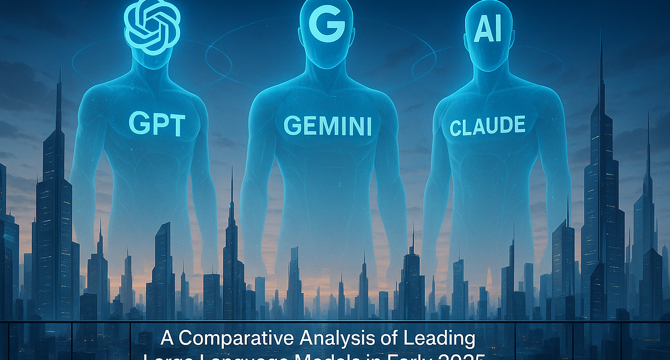Medium
1w
236

Image Credit: Medium
A Comparative Analysis of Leading Large Language Models (LLMs) in Early 2025
- Key findings suggest continued dominance of models from major tech firms like OpenAI (GPT-4o), Google (Gemini series), and Anthropic (Claude series) alongside Meta (Llama series) and specialized AI companies like DeepSeek and xAI in the LLM landscape.
- Strategic approaches vary between proprietary and open-source models, with the former focusing on performance and the latter on flexibility and cost-effectiveness.
- Major trends include the adoption of massive context windows exceeding one million tokens, advancing 'reasoning' capabilities, and a need for complex benchmarks covering extensive tasks.
- LLMs have transitioned from research to practical applications, impacting sectors like software, customer service, content creation, and scientific research.
- Standardized benchmarks are crucial for evaluating LLM capabilities, with a shift towards evaluating reasoning, coding, safety, and multimodality.
- Top 10 LLMs are analyzed based on criteria such as context window size, API costs, parameter counts, developer organization, and license type for a comprehensive view.
- Models differ in access costs, with premium proprietary models like OpenAI's GPT-4.5 having higher pricing compared to more cost-effective options like DeepSeek V3 and Alibaba's Qwen models.
- The availability of models with million-token context windows reshapes data processing possibilities but presents challenges in latency, cost, and information utilization.
- LLM API pricing varies widely, reflecting performance, features, and competitive strategies, with premium models coexisting with lower-cost alternatives.
- Transparency varies between proprietary and open-source models, with licensing models playing a crucial role in the competitive positioning and adoption of LLMs.
- The field of LLMs in early 2025 is dynamic, marked by fierce competition, diverse offerings, and a blend of proprietary and open-source solutions catering to varied user needs.
Read Full Article
14 Likes
For uninterrupted reading, download the app